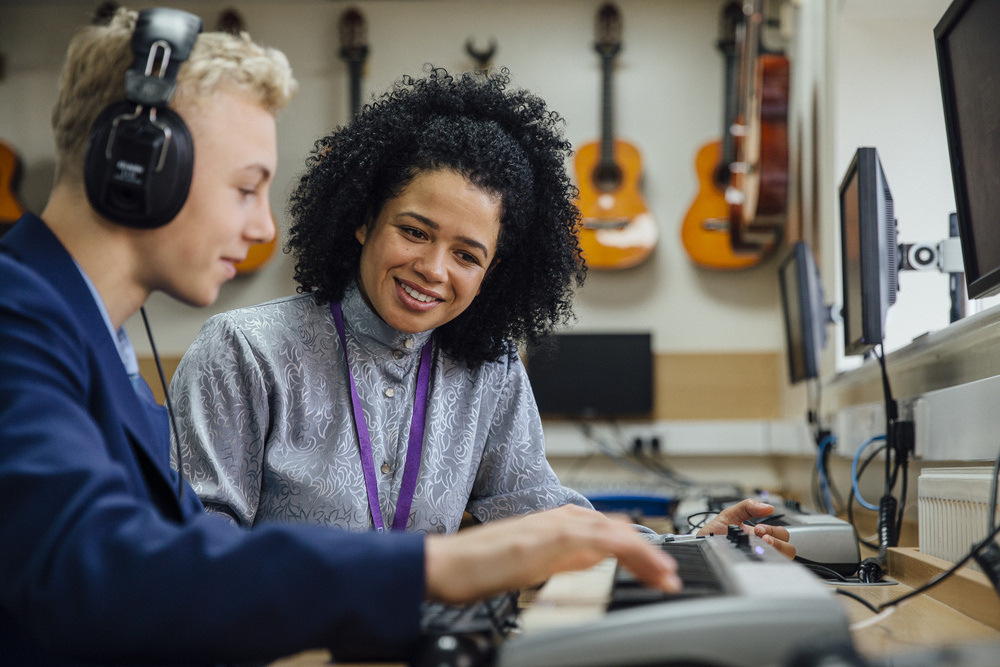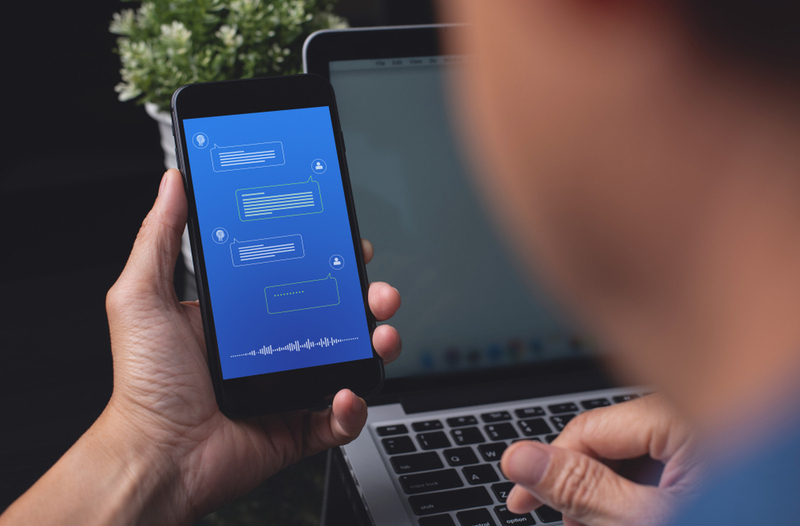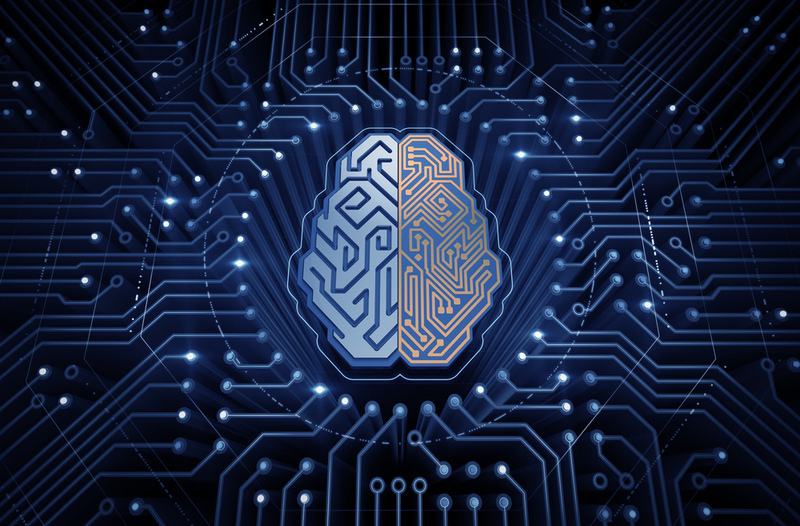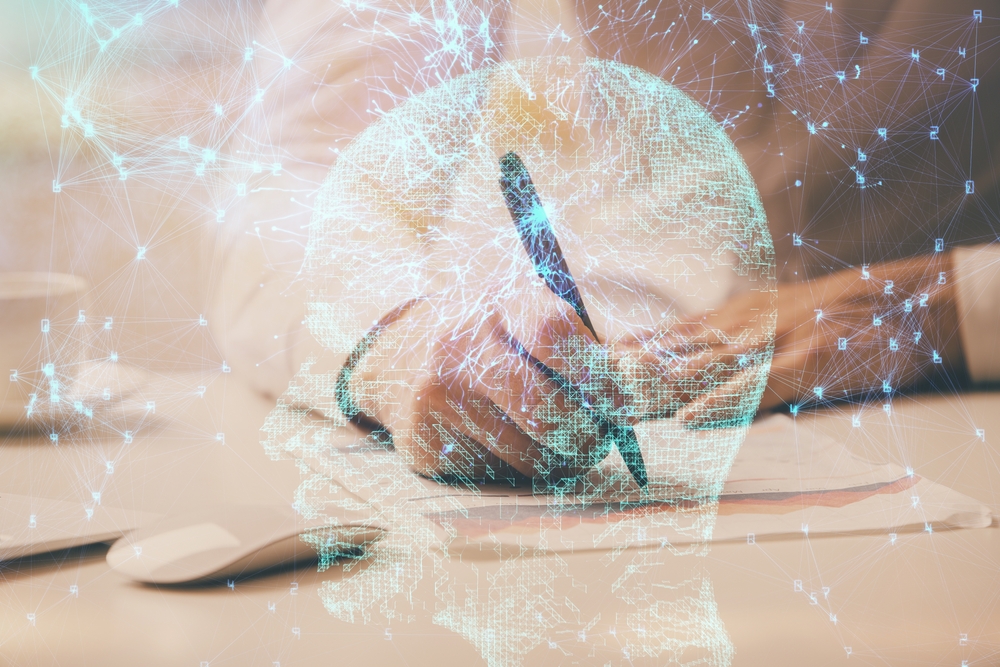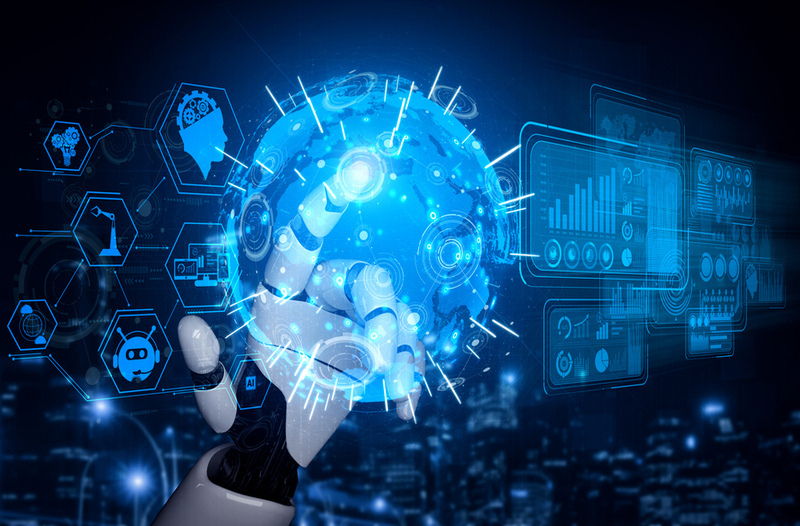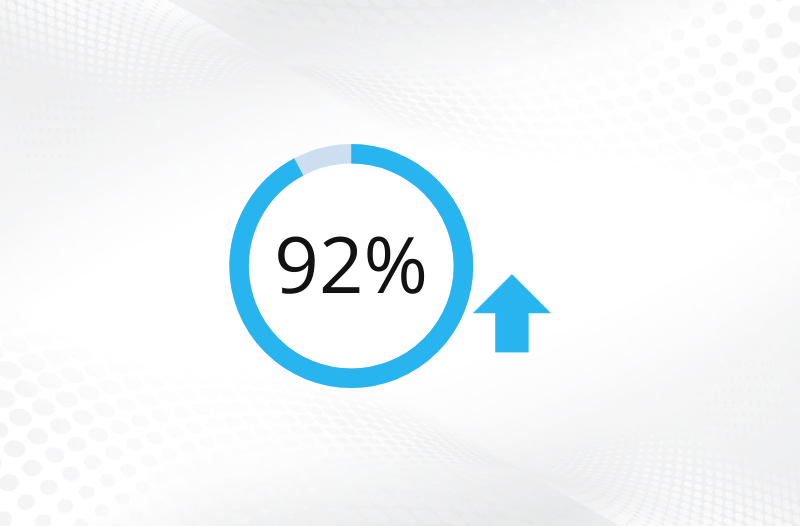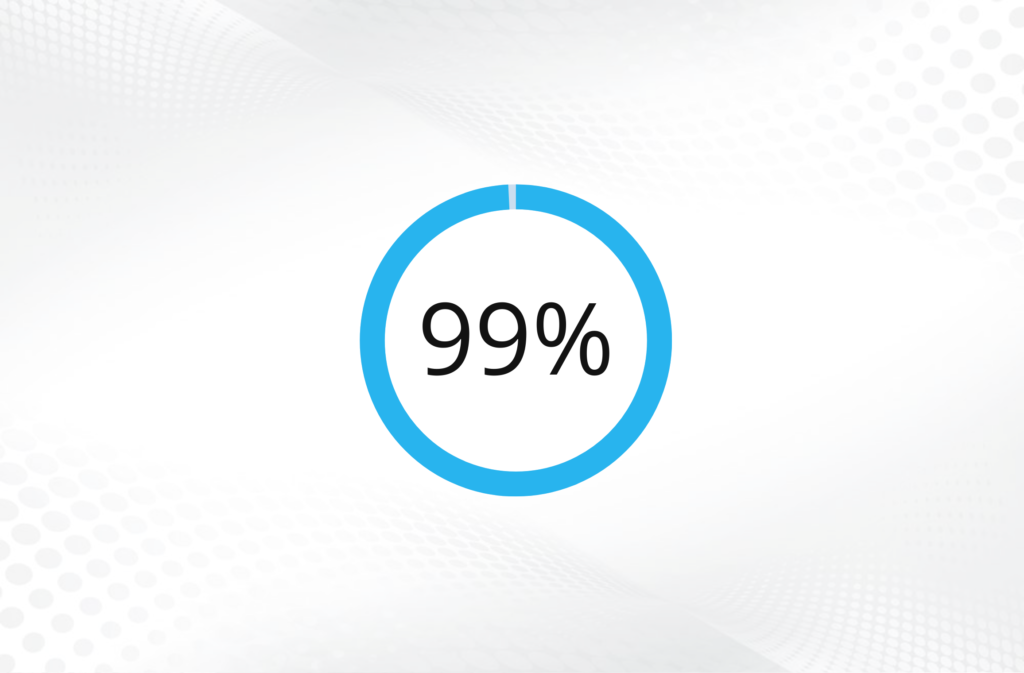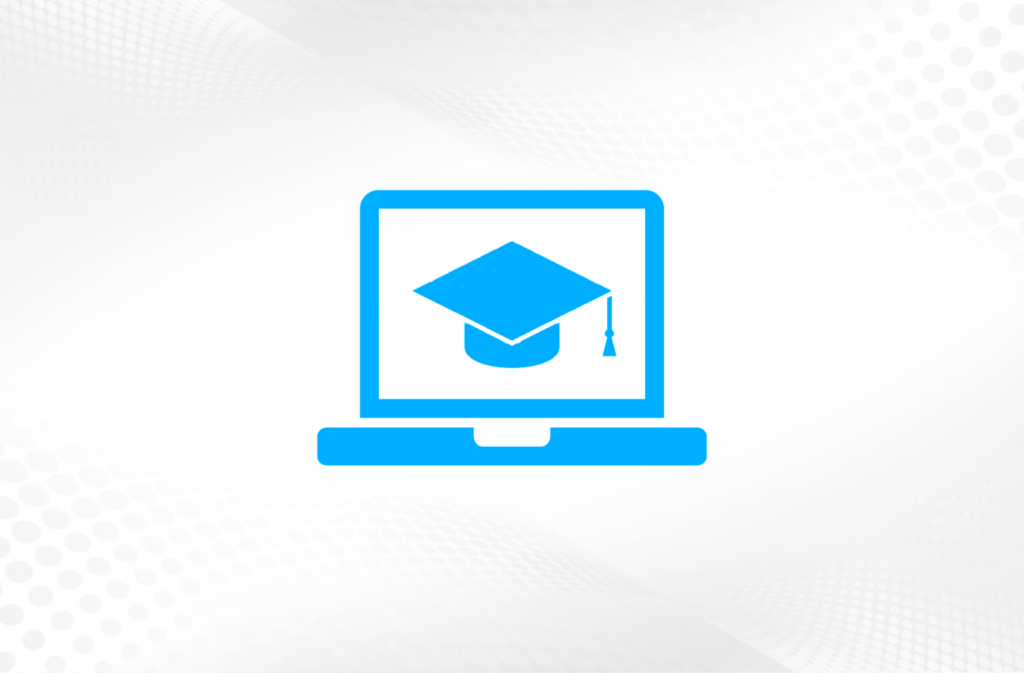Artificial intelligence
On 11 May 1997, the world of chess was changed forever. For the first time in human history, a reigning chess world champion was defeated by a machine. Although Gary Kasparov, one of the best to ever play the game, would accuse IBM of cheating in this particular game (and for a good reason too), the writing on the wall was clear. Deep Blue, the IBM chess-playing computer that defeated him, was only the first stepping stone in a world increasingly reliant on artificial intelligence.
The term ‘artificial intelligence’ had for a long time been the exclusive playground of sci-fi writers and a few enthusiastic scientists; but after the 90s, AI entered an era of such growth and development that only 20 years after the fated chess game people started worrying about losing their jobs to superior AI-based machines. And this, too, is not a mere conspiracy theory. AI is nowadays widely used in almost all industries and various sectors, not to mention entertainment, home appliances, personal computers, phones, and various other products driven by human creativity, vanity, and above all consumerism. But putting luddite objections aside, AI has been, for the most part, extremely useful and helpful, whether it be something simple like grammar checks, or something futuristic like self-driving cars. This also means that artificial intelligence has found uses in that self-reflecting prism of human society we call education.
Artificial intelligence is the ability of a computer or machine to mimic the human mind. The term was first coined by computer and cognitive scientist John McCarthy in 1956, but the idea of a ‘machine that thinks’ is almost as old as civilisation. Other terms that are closely associated with artificial intelligence are machine learning and deep learning. While artificial intelligence encompasses any computing technology that exhibits anything closely resembling human mind processes, machine learning refers specifically to AI that learns by itself. As it intakes data, it is capable of reprogramming itself to perform a specific task with more accuracy. Machine learning models are based on artificial neural networks with only one hidden layer (the other two layers being input and output). In that sense, deep learning models are just better equipped and suited to do the same more efficiently, relying on deep neural networks that consist of multiple hidden layers. They use the ‘backpropagation’ algorithm that can identify errors in calculations, assign them weight and push them back to previous layers to be refined. Deep learning models are capable of unsupervised learning, while machine learning models are much more reliant on human input and supervision.
Other relevant AI concepts are the concepts of Artificial Narrow Intelligence (ANI, also called ‘weak AI’) and Artificial General Intelligence (AGI, also called ‘strong AI’). In practical terms, all AI that we use today is ANI, as ‘strong AI’ is still theoretical and refers to AI that is fully capable of replicating autonomous functions of the human brain, choosing for itself from among a set of problems which to do and how. Finally, there is the concept of ASI, artificial super intelligence, that is far superior to the human mind, and is the one most likely to inspire sci-fi writers in building their dystopian worlds.
A study of artificial intelligence is unimaginable without mentioning the name of mathematician Alan Turing, famous for his role in breaking the Nazi encryption machine Enigma, who published a paper Computing Machinery and Intelligence in 1950. In it, he set out to answer a seemingly simple question: ‘Can machines think?’. He therefore proposed a test for ascertaining whether a machine is capable of thought. The Turing test, as it’s called, imagines a scenario in which a human interrogator is presenting questions to another human and a machine, without knowing which is which. All correspondence is to be done in a written format, and if the interrogator cannot distinguish answers provided by a machine from those of a human, the machine is said to be capable of artificial intelligence. Although widely accepted, the test has also been criticised, most notably by philosopher John Searle. He came up with the Chinese room argument, a thought experiment which illustrates that machines, or digital computers cannot be empirically shown to have ‘consciousness’ or ‘understanding’, no matter how closely they can mimic human behaviour.
Can AI actually think?
Although the debate about the nature and limits of artificial intelligence is still relevant, the field has expanded considerably over the last few decades. AI is nowadays part of our everyday lives, and is used almost everywhere. Some of the benefits of using AI are: automation of repetitive tasks, adaptability through learning algorithms, deep analysis of (big) data, accuracy, and reliability. Its applications are wide and varied. Common examples of AI include: speech recognition (the ability of AI to convert speech to digitised text), natural language processing (NLP; the ability to understand, interpret, and generate human text), image recognition, household robots (such as self-cleaning vacuum cleaners), and autopilot technology (most notably in aviation, but also in self-driving cars).
All of these cases fall under the category of narrow AI. That means that they are created for a very specific task and, for the most part, depend on data input from humans. While AI-based applications like voice assistants are intended for personal use, AI has been particularly useful for businesses across many industries. For example, in retail, AI can be found anywhere from personalised offers on e-commerce websites to stock management and autonomous mobile robots in warehouses. In banking and finance, AI can be used to identify which transactions are likely to be fraudulent, as well as to automate stock trading via trading platforms. Image recognition is important for security purposes in places like airports, shopping centres, and banks. Overall, when intended for individual use, AI can greatly enhance and personalise those experiences (like online shopping), while its effectiveness at repetitive tasks and data management comes to the fore in different industries.
When it comes to education, generally speaking, artificial intelligence is used to answer the needs of either students or teachers and to enhance the learning process. The role of AI in education can, therefore, be provisionally divided along the lines of the perspective of whom it aims to assist: teachers, students, or both.
Teacher-oriented AI
It is no secret that most teachers are dreadfully overworked and pitifully underpaid. Their role is crucial in facilitating zeal for learning in students, but they are constantly met with many challenges, be it a lack of resources or lack of time to dedicate to each and every student. This is especially true for large universities, where lectures can number a hundred students or more. These difficulties can become outright exasperating in online classes, where both teachers and students are at a disadvantage. Although AI is still not at a level where we can have autonomous robot instructors, there are many ways in which AI can help teachers and schools.
-
Administration
Before teachers can even begin to think about focusing on simply teaching, there are a myriad of non-educational and administrative tasks that they need to do first. This can be anything from grading exams and essays, to filling out paperwork and dealing with HR issues. AI is ideal for dealing with these back-office duties. By automating tasks like grading and other logistics-related issues (keeping track of student absences, preparing the necessary material, dealing with routine paperwork), AI can save teachers a lot of time and allow them to be more fully dedicated to their students. For higher education, AI can be ideal in the selection process, as it is not prejudiced like humans tend to be. Obviously, by opting to use AI that increases administrative efficiency, schools can also save on operational costs.
-
Improved courses
Despite working hard on course material, teachers cannot always be sure that they have prepared the right sort of material that makes it easier for their students to grasp new concepts. AI-based applications like Coursera, a massive open online course platform, can help teachers identify areas that need improvement, or find an altogether different approach to teaching. For example, when a large percentage of students submits the wrong answer to a homework assignment through Coursera, the teacher is immediately notified while, at the same time, the system offers hints to students about the correct answer. Students get feedback on their work right away, while the teacher can plan ahead to go over concepts that they are still having difficulties with.
-
Data collection
Smart data collection powered by AI can be utilised by schools not only to choose the best applicants (in case of universities), but also to keep track of their students’ progress. AI can help make sense of data thus acquired, pointing out, for example, in which subjects students excel or underperform as compared to the national standard. Likewise, schools can use AI to predict students’ grades, which can be a helpful indicator of the relative success of their learning processes. Some educational organisations, like the International Baccalaureate, have used AI to assign final grades to their students due to the 2020 lockdown, albeit with mixed results.
-
Secure online exams
The pandemic greatly disrupted the education sector. Although teaching via virtual classroom platforms was not entirely new, there was the issue of offering cheat-proof online exams on a massive scale. AI was one of the solutions offered. AI-based online exam platforms can randomise questions for each student, preventing them from helping others by sending them answers, but it can also track their behaviour. For example, some invigilating platforms use the student’s camera and microphone to make sure that they are not trying to cheat. The AI-powered face-tracking software is more than capable of spotting unusual or suspect behaviour, and alerting teachers about it.
-
Voice assistants
Voice assistants like Alexa, Siri, and Cortana can be great learning tools for students. For example, students can use them to interact with the course material both in-class and at home. When used in class, voice assistants can help students with minor questions, like vocabulary definitions, thus allowing the teacher to continue their lesson uninterrupted. According to online safety charity Childnet, 70 per cent of 8 to 17-year-olds have interacted with voice assistant technology in the last year. Most of those – 92 per cent in fact – have used the voice assistant technology to find information. AI virtual assistant devices can also be a useful tool to teach students basic programming or research skills. For example, students at the David E. Williams Middle School collaborated with Witlingo, a software-as-a-service company that builds speech recognition tools, to build their own AI system. They conducted interviews with their peers, collected the answers, and analysed the data to make a list of the most frequently asked questions about starting Year 9. Using Witlingo’s Buildlingo tool, they recorded answers to those questions and tagged them accordingly to make sure that the AI provided relevant answers. This process took some testing in order to prepare the system for all the varieties of questions students might have.
-
Personalised learning
Try as they might, teachers cannot provide equal attention to each and every student. This is especially true at a university level, where large classes make it impossible for educators to offer individual instruction to all of their students. AI is more than capable of addressing this issue. By using AI technology (machine learning, more specifically), students can get a hyper-personalised learning profile. Specifically, AI can recognise their ability and experience level, preferred mode of learning, and knowledge gaps to offer them tailor-made learning modules and materials. Smart tutoring systems like Carnegie Learning offer real-time feedback and adapt to students’ needs, so everyone can learn at their own pace and increase knowledge retention. For students that have difficulties with the language of the course they’re taking, or have certain disabilities, there are AI apps like a free PowerPoint plug-in called Presentation Translator. It develops subtitles of what the teacher is saying in real-time, which can also be useful for remote learning.
-
AI tutors
Key to the personalised approach in teaching are AI tutors, or AI study guides. Due to the nature of AI, these tutors are especially adept at teaching mathematics and writing. For example, MATHiaU is a free tutoring app that also offers educational materials. Teachers can use it to create a personalised, step-by-step guide for their students, while the app itself provides real-time feedback and points out students’ knowledge gaps. With AI tutors, students who struggle during class can catch up quite easily from home. This is especially welcoming for those from less privileged backgrounds who might not be able to afford a human tutor.
-
The flipped classroom model
Even if we disregard the growing role of AI in education, the role of teachers is changing. They are no longer seen as mere instructors, a sort of a ‘sage-on-the-stage’ personality that imparts knowledge to silently observing students. Rather, their role is becoming more of a facilitating one, where students are encouraged to do much more learning on their own, whereas teachers can point them in the right direction and foster creativity. In this flipped classroom scenario, AI can be ideal for providing expertise and tutoring to students. AI can even assign course materials and homework, prepare tests, and grade exams. Teachers would be there to facilitate, and provide support and hands-on experience.
-
Virtual classroom
The pandemic has highlighted the importance of quality online learning. As many schools had to haphazardly shift to online classes, it became clear early on that most of them were simply unprepared and underequipped. In these scenarios, AI, which is already ideal for virtual settings, is also the most cost-effective strategy to use. Some schools in Hong Kong have started using facial recognition AI for remote students to help identify those who are struggling or might have difficulties. AI scans their faces and identifies the mood they’re in, alerting the teacher about the cases that require their attention. Additionally, there are platforms that digitise and translate textbooks, making them available to students taking courses in different countries.
-
Smart content
Smart content refers to digitised study guides and customisable learning interfaces for students. This also includes video conferencing and video lectures. AI can be used to create personalised, customisable smart content. It can generate digital learning interfaces, study guides, video content, and digital textbooks, updating the content regularly to keep the information up-to-date. Teachers can also customise digital materials that work on different devices. Smart content makes learning easier by breaking the lessons down into interactive, digitised pieces and is ideal for virtual classrooms, gamification techniques, and video conferencing.
Although artificial intelligence can improve education in many ways, it still comes with its share of problems of a practical, as well as ethical, nature. Issues associated with AI don’t apply to education only, but have much wider consequences, from fears about superintelligent robots taking over the world, to having strange and unwanted YouTube recommendations.
Since the algorithms that comprise AI-based applications are built by humans, they are prone to having something called ‘AI bias’. In essence, this is dependent on the kind of data they prioritise, as well as the goals programmers set before them. For example, a self-driving car that is built to be safe might be excessively cautious, stopping every few seconds to ensure maximum safety. In education, AI has been used to assign final grades, but this proved to be a failure as it caused a major grading crisis in the UK. The algorithm developed by the government agency was fed incomplete, partial data, working within too narrow parameters (favouring smaller classes and historically successful schools). The end result was that it downgraded almost 40 per cent of students’ final grades.
New approaches to AI roles
Stuart Russell, a computer scientist at the University of California, Berkeley, believes that the root of the problem is in the kind of goals we assign AI machines. For instance, most AI software works with a set goal which it sets out to complete as efficiently as possible, neglecting considerations that humans might have about the issue at hand. Even if those considerations are not entirely logical or rational, they might still be something that an individual human prefers, assigning it an emotional, or simply habitual, value. Russell’s proposal, therefore, is that AI’s only goal should be to seek to satisfy human preferences based on human behaviour, rather than to work within narrowly defined parameters.
There is also the problem of privacy. Although AI is great at optimising data collection, it is also susceptible to data leakages and this could pose a big challenge for schools that choose to fully rely on AI. Just think about the controversial practices of certain social media sites that sell user data to third-party companies. This issue becomes particularly sensitive when talking about children. For example, facial tracking in schools has its advantages, but it could make the identity of children more open to online misuse due to hacking. With AI automation, practices like phishing (a fraudulent practice of obtaining sensitive data via digital communication such as e-mail) and delivery of computer viruses might become more dangerous.
Although AI is capable of achieving incredible results when automating tasks, AI performance is still generally lower than that of a human. For example, most deep learning models can distinguish between an image of a dog and a cat with an accuracy of 90 per cent, but human accuracy is still above 99 per cent. To reach this level of accuracy, a lot of work and fine-tuning of AI is required. So, although AI tutors and teaching tools are helpful, nothing tops a good teacher.
AI should accentuate, not replace
And nothing tops a chess grandmaster – not even a machine. Sure, we have been successful at creating unbeatable chess programmes, but chess tournaments between humans still happen. Perhaps you might have watched a Netflix show that piqued your interest in the game. The reason? Well, Gary Kasparov recently made a comment about a new chess programme that might provide the right answer: “It’s not creative, it just sees the pattern, the odds.” Education is all about creativity. There is only so much information a kid can learn during class, but what stays with them is critical thinking, creative approaches, and a certain yearning for knowledge. In the same talk, Kasparov asserted: “Every computer player is now too strong for humans. But we actually could learn more about our games. I can see how the millions of games played by AlphaGo during practice can generate certain knowledge that’s useful.” Such is the case of AI in education. It is capable of generating not only knowledge that’s useful, but an environment in which such knowledge can be obtained more easily. With the right understanding, AI can lead both teachers and students in the right direction and make education a lasting, enlightening experience.


